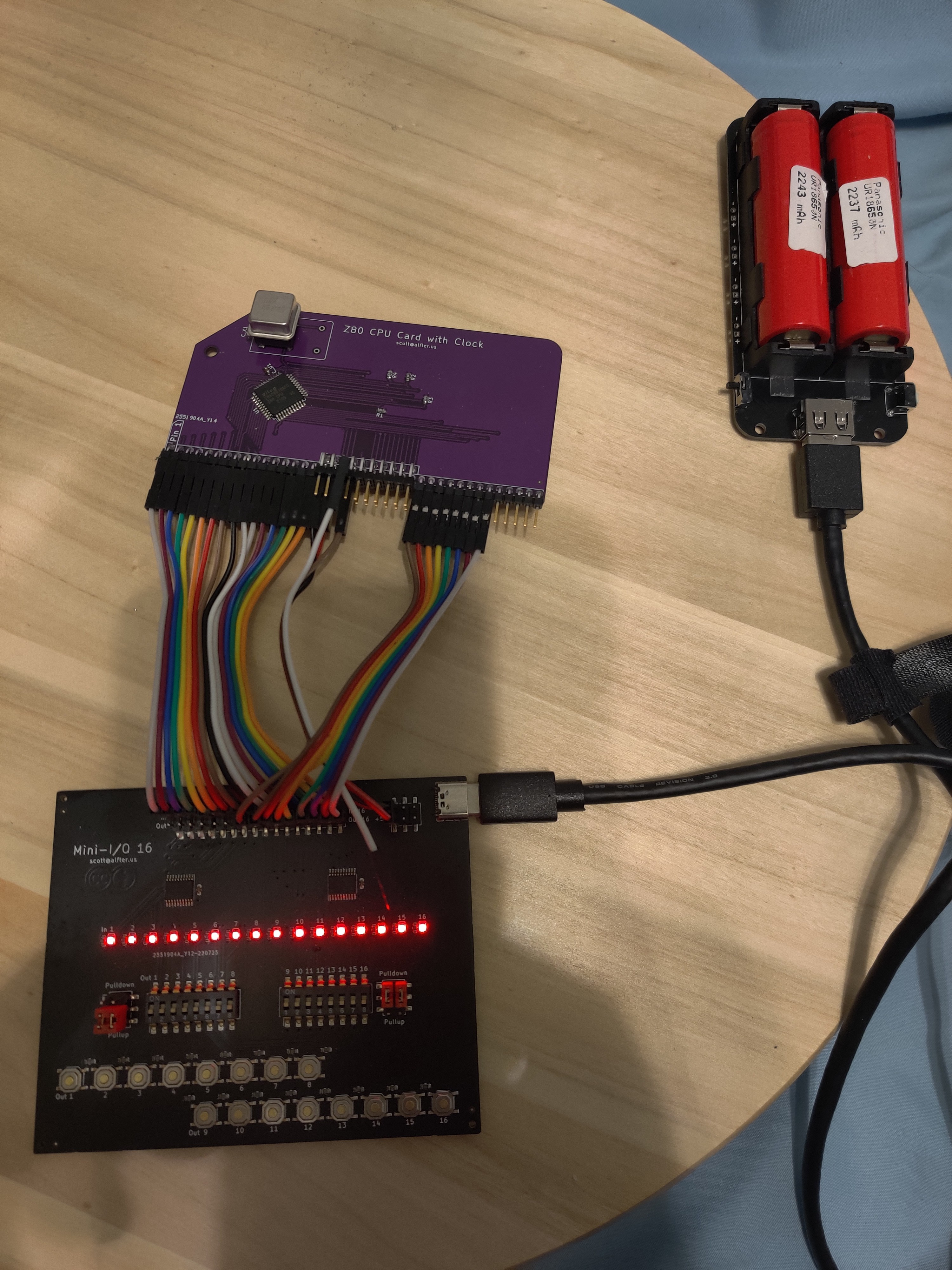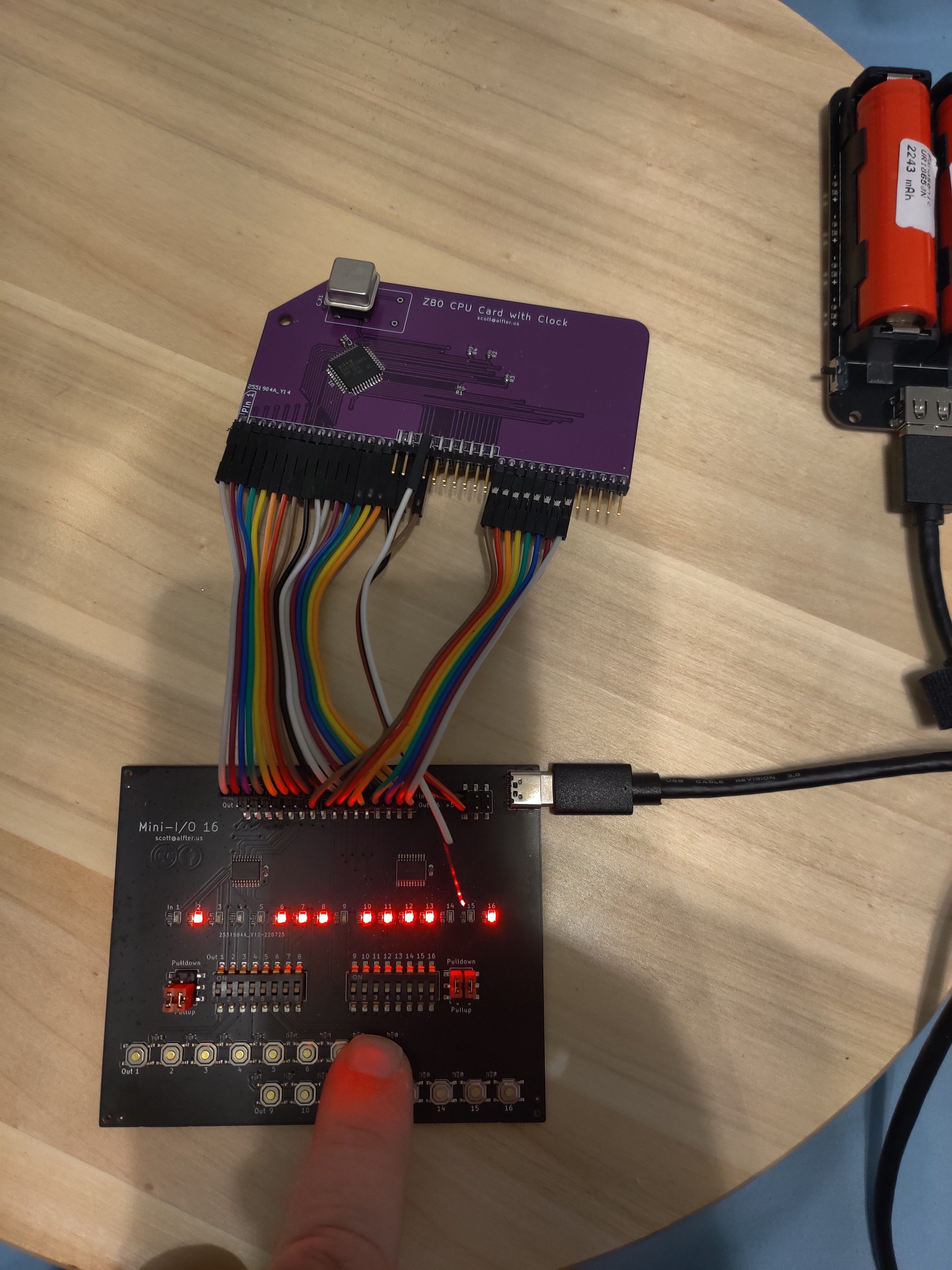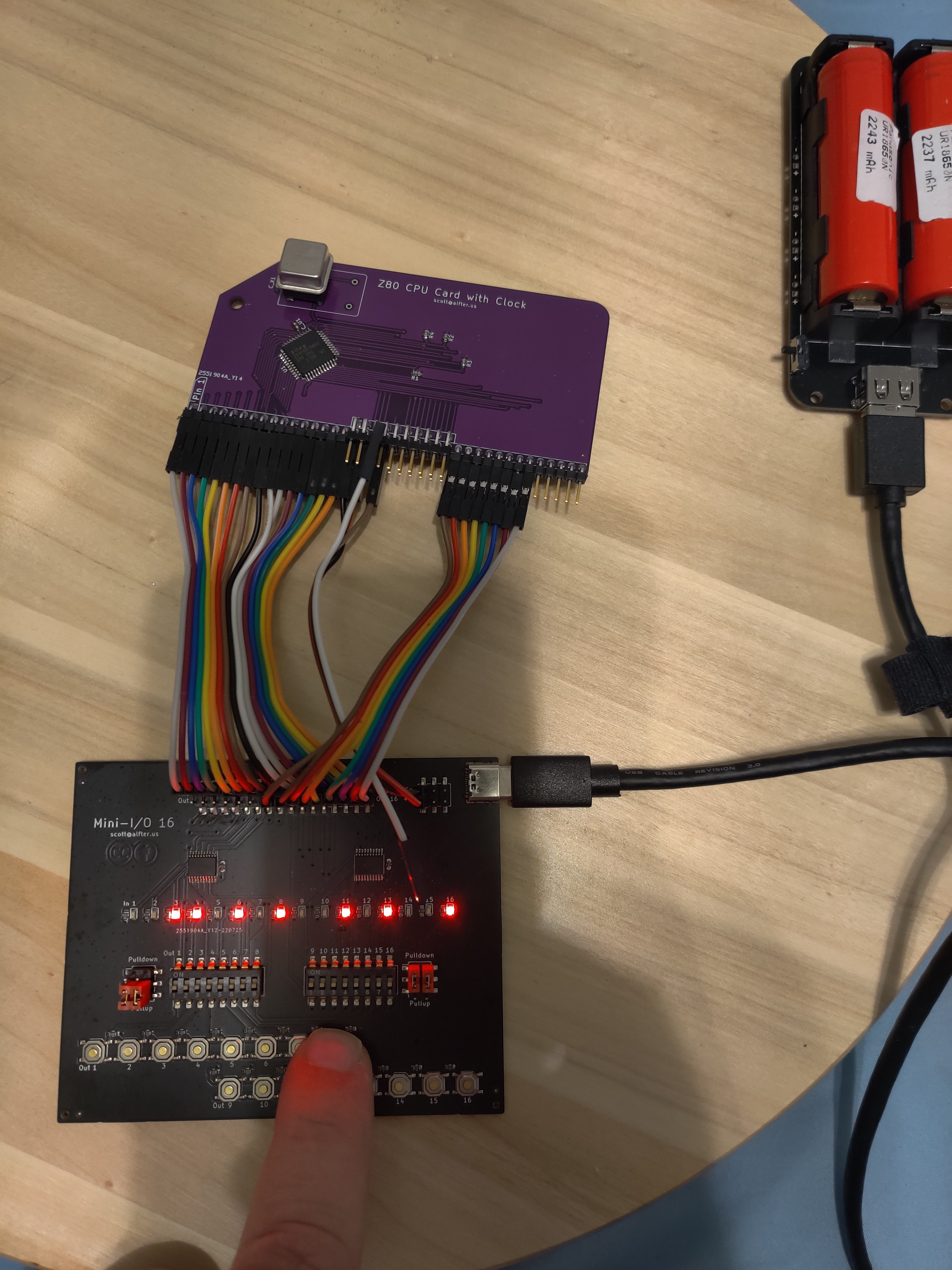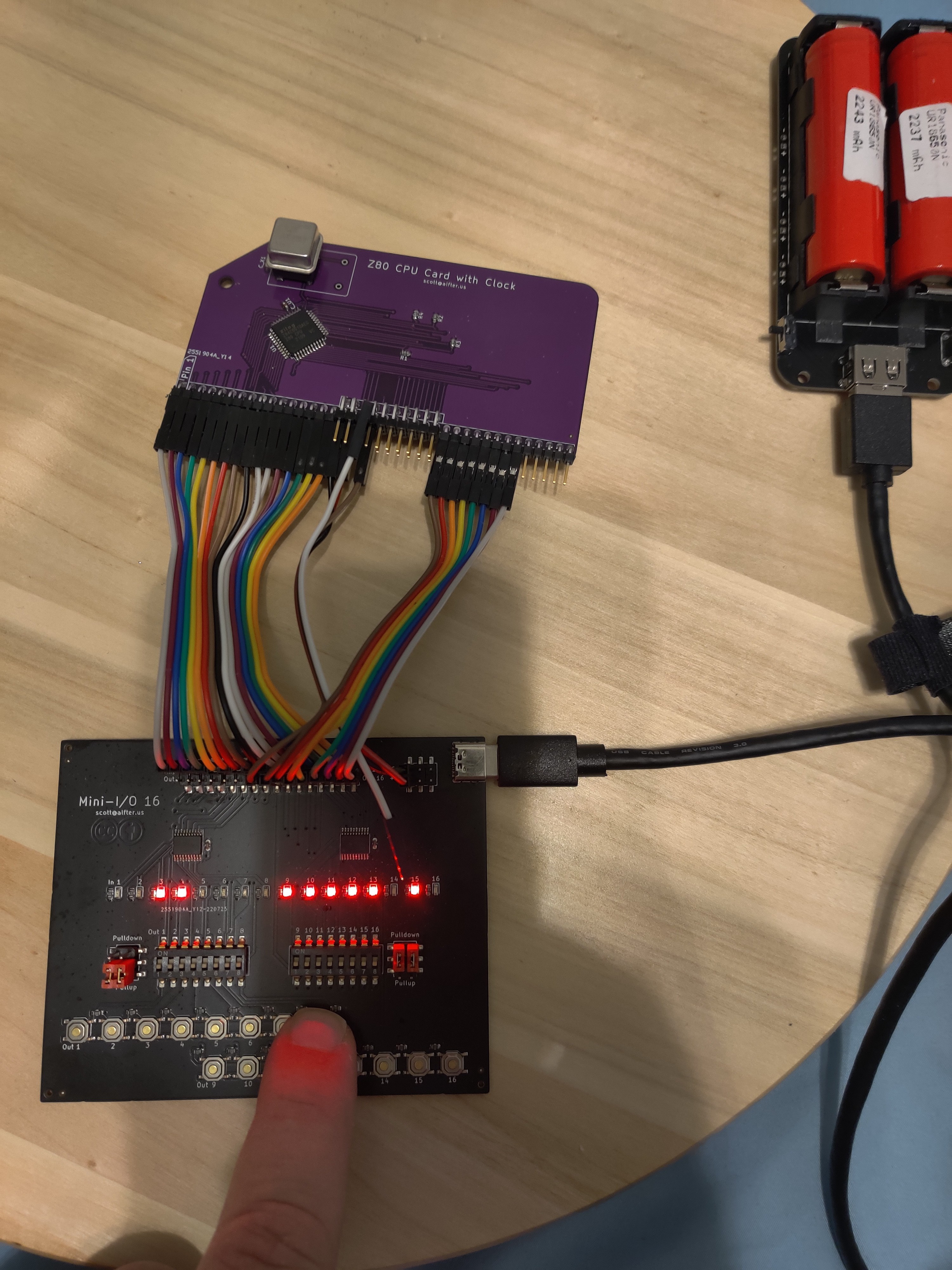-
Usage: verify a CPU board works
10/29/2022 at 20:46 • 0 commentsI'm doing my own spin on an RC2014-ish computer system, and the first board I knocked together is a Z80 CPU board. Many CPUs, including the Z80 and 6502, can be made to cycle through the address bus by putting a NOP ($00 for the Z80, $EA for the 6502) on the data bus, so this makes for an easy "smoke test" that you can carry out with the Mini-I/O 16.
Connect the address bus to the input pins. Connect the data bus to half of the output pins; set the pins to pulldown and set the appropriate opcode for NOP on the DIP switches. Connect /RESET (it's nearly always active-low) to one of the remaining output pins; set it to pullup. Connect +5V and GND.
Power up. The CPU should start free-running, which will light up all 16 LEDs. If it doesn't, maybe it needs to be reset...press whichever button you tied to /RESET. Depending on the clock speed (I have my Z80 running at 10 MHz), you might not see even the MSB visibly blink, let alone the other bits. Perhaps swapping in an oscillator driven by a 32.768-kHz RTC crystal would be appropriate here.
![]()
When you hold down whichever button you tied to /RESET, the display should pause with whatever address is current. You should get a different address each time:
![]()
![]()
![]()
-
...and it's done.
08/11/2022 at 05:07 • 0 commentsThe boards arrived last week...took hardly any time at all for them to be assembled and shipped. I'm keeping one for myself, but if you're looking for a simple way to monitor a bunch of logic lines (or maybe you just want to add a row of blinkenlights to your retrocomputer project), maybe you might be interested in buying one of my extras.
Mini-I/O 16
16 LEDs and 16 pairs of switches to exercise digital circuits. Get power from USB-C or the DUT.



